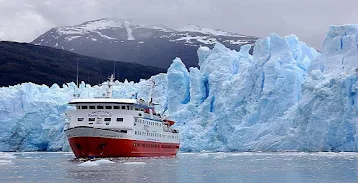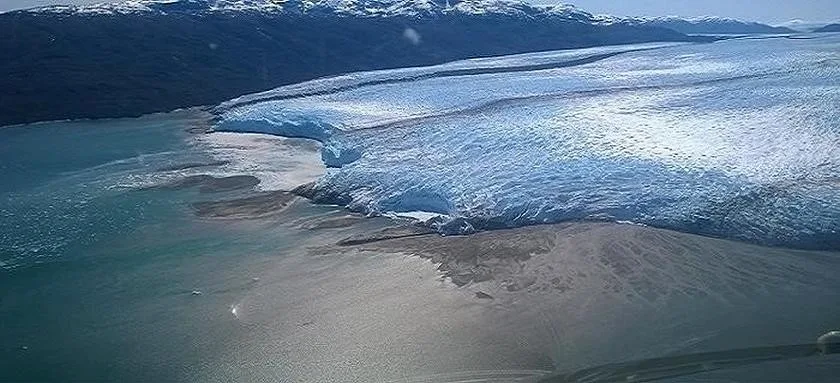- Get link
- Other Apps
Pio XI, also known as Brüggen Glacier, commemorates the German-Chilean geologist Johannes Brüggen Messtorff. Situated within the Bernardo O'Higgins National Park, located in the XII Region of Magallanes, the southernmost region of Chile, Pio XI is part of the Southern Ice Field, one of the largest continental ice masses globally, ranking third in size after Antarctica and Greenland. Currently, Pio XI/Brüggen Glacier spans a length of 64 km, with a 6 km front, and its towers rise to heights ranging from 70 to 80 meters above sea level.
Excluding those on the White Continent, Pio XI is the largest glacier in the Southern Hemisphere at nearly 1,300 km². Surprisingly, unlike most of the world's glaciers, Pio XI experienced significant growth between 2000 and 2016, with the ice advancing about 1.8 kilometers.
On the other hand, as for its current state, several studies and measurements indicate that the glacier has been retreating and losing mass. The most recent data suggest that, overall, it has been experiencing a decline in volume due to climate change. Despite this, advancing phenomena have been recorded in specific areas of the glacier during certain periods.
The differences may be due to several factors, including local climate variability, the topography of the surrounding terrain, and the interaction between the glacier and its environment. In addition, the measurement methods and time intervals considered in the studies may influence the conclusions about glacier behavior.
The Pio XI/ Brüggen glacier is also a tourist attraction because of its remoteness, size, unique growth characteristics, bluish ice and the spectacle of its floes.
Other interesting facts
In 1945, Alberto de Agostini, a Salesian missionary, researcher, explorer, and documentary filmmaker, visited the area and recounted the story of a Norwegian settler who attempted to establish a ranch at the head of the Eyre Fjord in 1926. However, he was forced to abandon the area due to the rapid advance of the Pio XI glacier. Glaciological reports from the 90's indicate that the force of the glacier's movement resulted in the creation of a new lake. As the ice advanced, it encroached upon the surrounding forest, leading to the accumulation and crushing of dead trees by the advancing ice mass.* 79 percent of the glaciers existing in South America are located in Chile, most of which are in the Southern Ice Field. Southern Ice Field has a length of 350 km. and an area of 16800 km.2 of which 85% belongs to Chile and the rest to Argentina. Pio XI is the largest of the 49 main glaciers that form Southern Ice Field.
* There is a mountain/cold climate, the temperatures are lower than 0º C., precipitations exceed 2000 mm a year and are generally in the form of snow. From October to March are the acceptable months to go on a trip to Pio XI.
* Although so far little promoted as a tourist attraction in Chile because of its remoteness, this glacial mass really represents a great spectacle due to its large size, shaded ice and the impressive view that constitutes the icebergs calving.
* Due to its proximity to the sea, the Pio XI glacier is prone to spectacular iceberg calving events. Besides provoking mixed feelings, these events can be both dangerous and impressive, and are often of great interest to tourists and scientists alike.
* Pio XI is of great ecological importance; not only is it a natural wonder, but it also plays a crucial role in the surrounding ecosystem. It contributes to the flow of fresh water to the ocean, influences local weather patterns, and provides unique habitats for diverse life forms, including birds and marine mammals.
* Given its unique location and sensitive response to climate change, the Pio XI Glacier has been the subject of numerous scientific studies. These studies help to better understand the effects of global warming and the overall health of glaciers in the southern hemisphere.
How to reach Pio XI Glacier
 |
| Skorpios Cruises, Fjords and Glaciers |
The route offers a unique opportunity to see the ancient ice formations of Chilean Patagonia and explore remote areas while enjoying the luxurious comforts of a cruise ship.
Brüggen or Pio XI Glacier
Location
- Get link
- Other Apps


Comments
Post a Comment